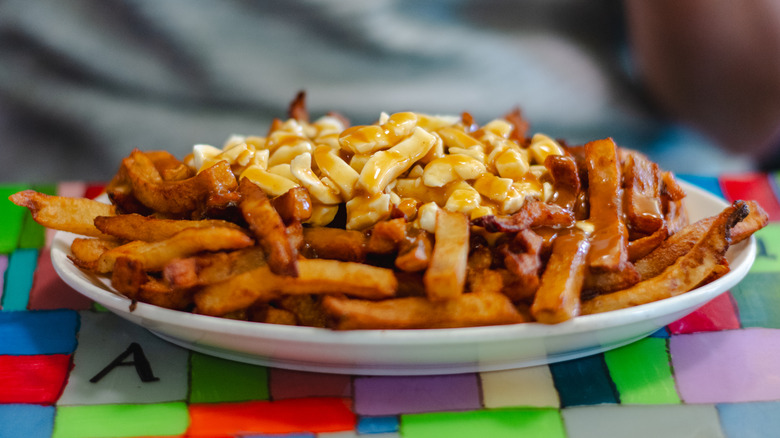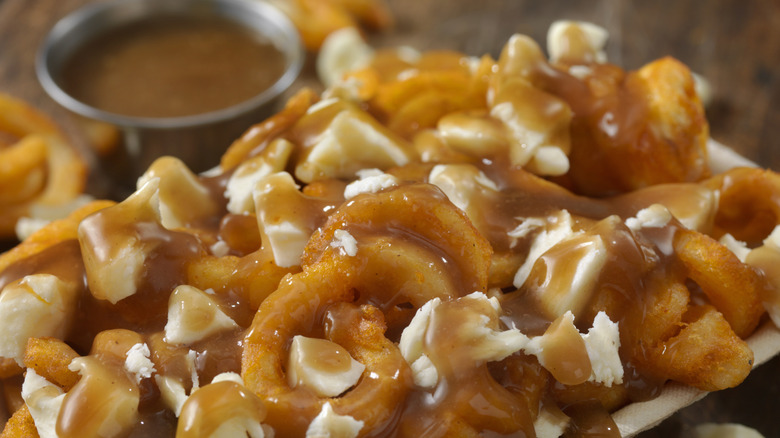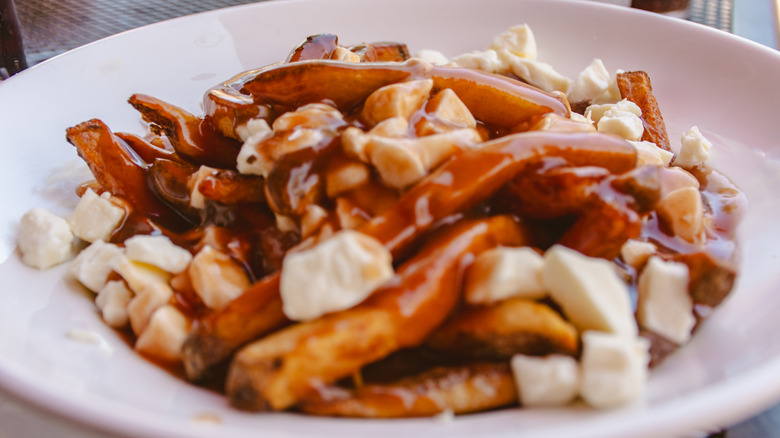The Origin And Evolution Of Canadian Poutine
Poutine is one of Canada's most iconic comfort foods. A hearty dish that combines fries, cheese curds, and hot gravy into a gooey, savory masterpiece, it's worthy of the hype that surrounds it. For the uninitiated, it may seem like just a jazzed-up plate of loaded fries. But to Canadians and those lucky enough to try the dish, it's so much more. Its appeal lies in its perfect balance: Crispy fries that hold their shape, squeaky cheese curds that don't melt completely, and rich gravy that ties it all together.
Poutine may have started in Quebec, but it is now served everywhere, from small-town diners to Disney World's Epcot and even high-end restaurants, where chefs put their own gourmet spins on this humble classic. It has also inspired heated debates about authenticity, with Quebec proudly staking its claim to the dish's origins. Poutine's status as a cultural icon is undeniable, with strong opinions on what makes the "real deal" and what crosses into culinary heresy. But one thing's for sure: This dish is impossible to resist once you've tried it.
The history of poutine
The origin of the poutine is steeped in folklore, though most stories trace it back to rural Quebec in the 1950s. Legend has it that the dish began when a customer at Le Lutin Qui Rit, a restaurant in Warwick, asked for cheese curds on his fries. According to Cottage Life, the owner reportedly exclaimed, "Ça va faire une maudite poutine!" — or "That's going to make a damn mess!" — and the name stuck. Gravy was later added to keep the fries warm, creating the dish we know today. While poutine was initially dismissed as lowbrow fare, its popularity spread across Quebec and beyond. By the 1980s, it had gained national recognition and started showing up in fast-food chains, solidifying its place in Canadian culture.
Of course, with popularity comes debate. Quebecois are fiercely protective of poutine's heritage, seeing it as a symbol of regional identity. Some even bristle at the label "Canadian," arguing that it dilutes its distinctly Quebecois roots. Poutine's journey from a rural snack to a cultural emblem reflects the complex interplay of food and identity, not just in Quebec but throughout Canada.
Poutine variations across the globe
While the classic poutine formula remains untouchable for purists, variations abound, each adding its own twist to this beloved dish. Across Canada, regional spins include lobster poutine in the Maritimes (particularly Nova Scotia), butter chicken poutine in Ontario, and even foie gras poutine at upscale eateries. For the more adventurous, some chefs swap out the fries for tater tots or sweet potatoes, creating new textures while staying true to the dish's essence.
Poutine has also gained international fans, popping up on menus in the United States, France, and even Japan. In America, loaded fries often get mistaken for poutine, though Canadians are quick to correct this oversight. Globally, chefs have embraced the dish's versatility, adding everything from pulled pork to kimchi to create fusions that reflect local tastes.
Poutine's evolution shows no signs of slowing down. Whether it's a late-night snack from a Quebec diner or a gourmet creation in a Michelin-starred restaurant, it continues to evolve while remaining rooted in its rich history. It's a dish that proves food doesn't just satisfy hunger — it tells a story.


